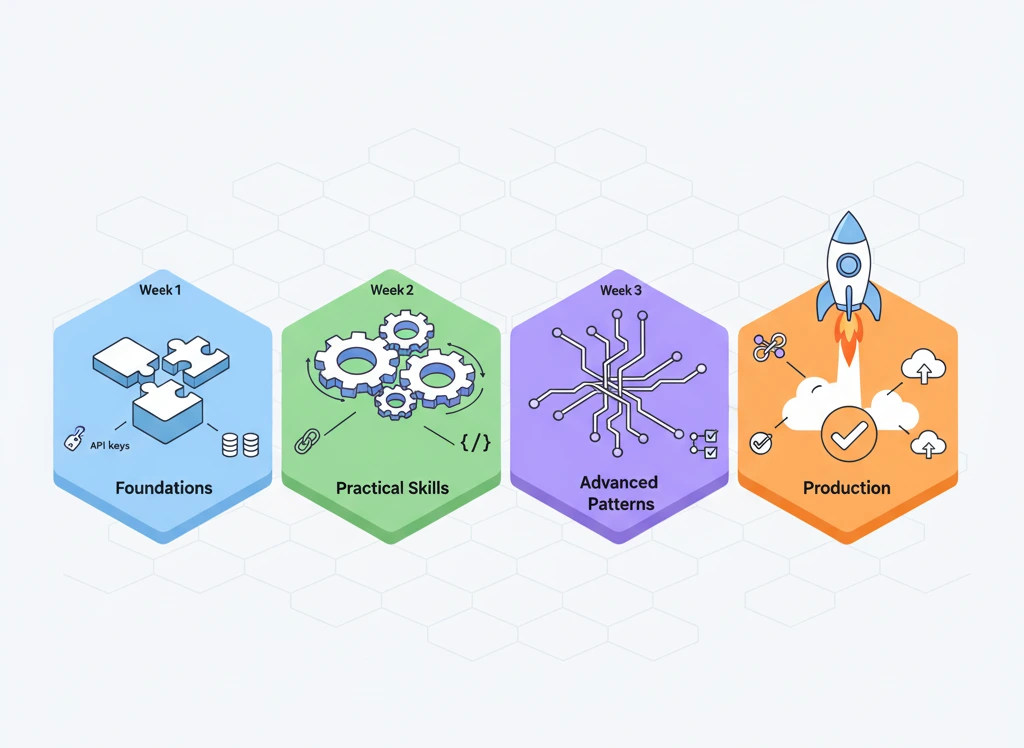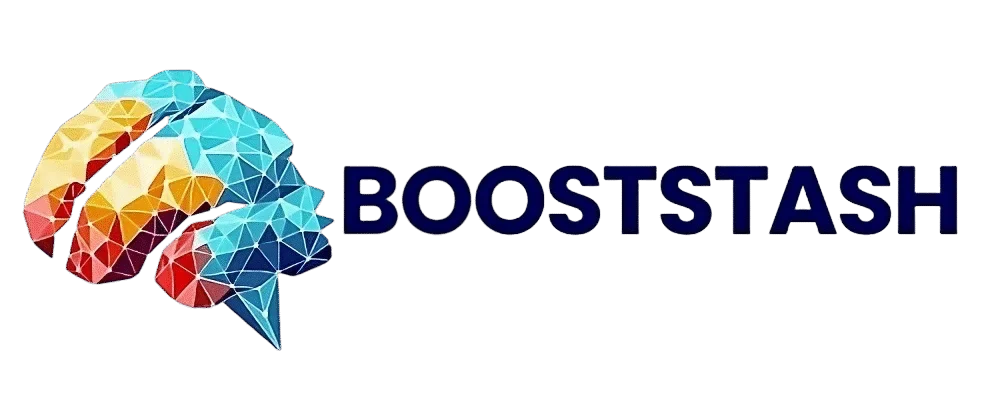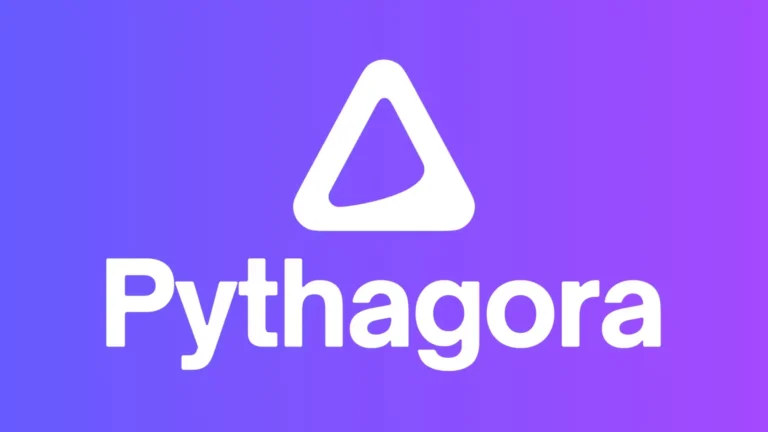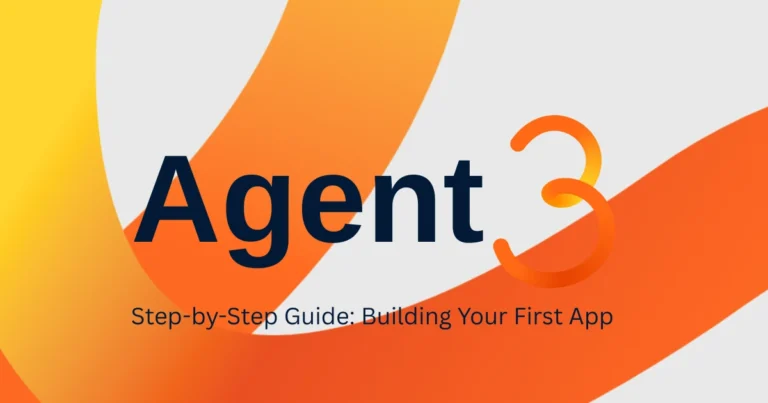Build Your First AI Agent in 30 Days (Zero Code)
You’ve seen ChatGPT, heard about AI agents automating entire workflows, and watched YouTube demos where someone builds a research assistant in 20 minutes. You think, “I want that.” But every tutorial assumes you already know APIs, Python, and LangChain. Where do you even start when you know nothing?
This roadmap takes you from zero AI knowledge to building your first working agent in 30 days. You’ll learn core concepts, pick the right no-code or low-code framework, and build 3 real projects: a Slack summary bot, a research assistant, and a lead enrichment agent. No CS degree required.
By Day 30, you’ll have deployed 3 live agents, understand when to use n8n vs LangChain, and have a clear next-steps path to advanced automation.
Why AI Agents > ChatGPT for Real Work
ChatGPT is great for one-off questions, but it can’t do anything—it can’t read your emails, pull data from Airtable, post to Slack, or check Google Sheets automatically. AI agents connect ChatGPT’s brain to real tools and workflows, turning conversations into actions.
What agents can automate:
- Read incoming emails → summarize → post summary to Slack
- Monitor Reddit for keywords → save to Notion → notify team
- Scrape website data → enrich with LinkedIn info → update CRM
- Answer customer support questions → update ticket → escalate if needed
- Generate weekly reports from multiple sources → email to stakeholders
A junior marketer I know built a lead enrichment agent (email → LinkedIn data → Airtable) that saves her 10 hours every week. A freelance writer built a research agent (topic → Google Scholar + Reddit + Twitter → Notion summary) that cut research time by 70%. These aren’t expert-level projects—they’re beginner-friendly automations built in 2–3 days after learning the basics.
If you want AI to work for you instead of just with you, agents are the unlock.
The 5 Core Concepts (Explained in Plain English)
1. APIs (How Tools Talk to Each Other)
An API is a messenger. When your AI agent wants to read Gmail, it asks Gmail’s API: “Give me the last 5 emails.” Gmail sends back the data. You don’t need to code this from scratch—tools like n8n and LangChain handle API calls for you with drag-and-drop or simple code.
Beginner action: Sign up for free API keys (OpenAI, Airtable, Gmail). Understand: API = how tools share data.
2. Prompts (How to Tell AI What to Do)
Agents follow instructions you write (prompts). Bad prompt: “Summarize this.” Good prompt: “Summarize this email in 2 bullet points. Focus on action items and deadlines.” Clear prompts = reliable agents.
Beginner action: Practice writing prompts in ChatGPT. Test variations. See what works.
3. Logic (If This, Then That)
Agents use simple logic: IF email contains “urgent,” THEN notify me immediately. ELSE, save to “low priority” folder. This is automation logic. No-code tools (n8n, Make) let you build this visually with flowcharts.
Beginner action: Map a manual workflow on paper: What do you do step-by-step? That’s your agent logic.
4. Memory (How Agents Remember Context)
ChatGPT forgets after each conversation. Agents store context in databases (Airtable, Notion, Supabase) so they remember past interactions. Example: A customer support agent retrieves past ticket history before answering.
Beginner action: Understand: agents = LLM brain + external memory (database).
5. Triggers (What Starts the Agent)
Agents wake up when something happens: new email arrives, form is submitted, Slack message sent, or scheduled time (e.g., every Monday at 9 AM). Triggers automate the “start” step.
Beginner action: Think: What event should start your workflow? That’s your trigger.
Your 30-Day AI Agent Building Roadmap
Week 1 – Foundations (Days 1–7): Learn the Concepts
Day 1–2: Understand what AI agents are
- Watch: 3 YouTube tutorials on “What is an AI agent” (search: Liam Ottley, Matt Wolfe, AI Explained)
- Read: OpenAI API documentation intro (just the overview—don’t code yet)
- Goal: Understand LLM → API → Action workflow at a high level
Day 3–4: Pick your first tool (n8n or Make.com)
- If non-technical: Start with n8n (visual, beginner-friendly)
- If some coding: LangChain + Python
- Install n8n locally (Docker) or use n8n Cloud free tier
- Complete n8n “Getting Started” tutorial (build your first 3-node workflow)
Day 5: Get free API keys
- OpenAI API (free $5 credit): platform.openai.com
- Google Sheets API: console.cloud.google.com
- Airtable API: airtable.com/developers
- Slack webhook: api.slack.com/messaging/webhooks
- Store API keys securely (password manager)
Day 6–7: Build your first “Hello World” agent
- Goal: Trigger via webhook → Send message to ChatGPT API → Post response to Slack
- Use n8n or Make to connect: Webhook → OpenAI node → Slack node
- Test: Send a webhook request, see response in Slack
- Result: You’ve built your first AI-powered automation (even if simple)
Week 2 – Practical Skills (Days 8–14): Learn Data Flow
Day 8–9: Learn to manipulate data (JSON basics)
- Problem: APIs return data in JSON format. You need to extract the right fields.
- Watch: “JSON for beginners” (10-min YouTube)
- Practice: Use n8n’s “Set” or “Code” node to extract email subject, body, sender from Gmail API response
- Goal: Understand how to grab data.items[0].subject from API responses
Day 10–11: Add logic (IF/THEN conditions)
- Build: IF email subject contains “invoice,” THEN save to “Accounting” folder. ELSE, ignore.
- Use n8n’s “IF” node or Make’s “Router”
- Test with 5 sample emails
- Result: Agent makes decisions based on data
Day 12: Add memory (store data in Airtable)
- Connect Airtable to your workflow
- When email arrives → extract sender, subject, date → save to Airtable row
- View your Airtable base—data should populate automatically
- Result: Agent now “remembers” past data
Day 13–14: Build Project 1 (see mini case study below)
- Project: Slack Daily Summary Bot
- Trigger: Every day at 9 AM
- Action: Fetch yesterday’s Slack messages → Send to ChatGPT (“Summarize in 3 bullets”) → Post summary to #general
- Deploy and test for 3 days
- Result: Your first useful agent running in production
Week 3 – Advanced Patterns (Days 15–21): Multi-Step Workflows
Day 15–16: Learn prompt chaining
- Problem: One prompt can’t do everything. Break tasks into steps.
- Example: Step 1 prompt: “Extract key facts from this article.” Step 2 prompt: “Turn these facts into a tweet thread.”
- Build: Article URL → Scrape text → Extract facts (GPT) → Generate tweet (GPT) → Post to Twitter API
- Result: Multi-step reasoning agent
Day 17–18: Add error handling
- Problem: APIs fail. Add fallback logic.
- Use n8n’s “Error Trigger” or try-catch in LangChain
- Example: IF API fails, THEN retry 3 times. IF still fails, send alert to Slack.
- Test by intentionally breaking an API call
- Result: Reliable agents that don’t crash silently
Day 19–21: Build Project 2 (see mini case study below)
- Project: Research Assistant Agent
- Input: Topic keyword
- Workflow: Search Google (Serper API) → Scrape top 5 results → Summarize each → Combine into research report → Save to Notion
- Deploy via webhook (trigger with Postman or n8n form)
- Result: Automated research pipeline you can use daily
Week 4 – Real-World Deployment (Days 22–30): Production-Ready Agents
Day 22–23: Optimize for cost
- Problem: OpenAI API costs add up.
- Switch expensive tasks to Claude (cheaper) or local models (Ollama)
- Use caching: Don’t re-process the same email twice
- Set token limits on prompts (max 500 tokens output)
- Result: Agents that cost less than $5/month to run
Day 24–25: Add monitoring
- Set up logging: every agent run → log to Google Sheets (timestamp, status, cost)
- Add alerts: IF agent fails 3 times, notify via email
- Use n8n’s built-in execution history to debug
- Result: You can troubleshoot production issues
Day 26–28: Build Project 3 (see mini case study below)
- Project: Lead Enrichment Agent
- Input: Email address from form
- Workflow: Email → Find LinkedIn profile (Proxycurl API) → Extract job title, company → Save to Airtable → Notify sales team in Slack
- Deploy to production (connect to real lead form)
- Result: Agent handling real business tasks
Day 29–30: Document and iterate
- Write README for each agent: what it does, how to trigger, what APIs it uses
- Identify next improvements (e.g., add retries, speed up scraping)
- Plan Agent #4 based on your actual workflow pain points
- Result: Sustainable agent development practice

n8n vs LangChain vs Make vs Zapier (Beginner’s Guide)
| Framework | Best For | Difficulty | Cost | Speed to First Agent |
|---|---|---|---|---|
| n8n | Non-coders wanting control | Easy | Free (self-hosted) or $20/mo | 1–2 hours |
| Make.com | Visual automation, fast setup | Very easy | Free tier (1000 ops/mo) | 30 minutes |
| Zapier | Simplest, least flexible | Very easy | $20/mo (limited free) | 15 minutes |
| LangChain (Python) | Developers wanting full control | Moderate | Free (coding required) | 3–5 hours |
| LangGraph | Complex multi-agent systems | Hard | Free (advanced coding) | 10+ hours |
Recommendation by persona:
- “I don’t code at all” → Start with Make.com (fastest win) → Migrate to n8n (more power)
- “I know some Python” → Start with LangChain (full control, portable code)
- “I want to scale to 100+ agents” → Learn n8n first → Graduate to LangChain/LangGraph
- “I just want something working today” → Use Zapier (limited but instant)
My recommendation for this roadmap: Start with n8n. It’s visual (beginner-friendly) but powerful enough for advanced workflows. Free self-hosted option. Huge community. Easy to export and migrate later.
Build These 3 Agents (Step-by-Step)
Project 1 – Slack Daily Summary Bot (Estimated time: 2 hours)
What it does: Every morning at 9 AM, summarizes yesterday’s Slack messages and posts a 3-bullet summary to #general.
Tools: n8n, Slack API, OpenAI API
Step-by-step:
- Create Slack bot + get API token (slack.com/api)
- n8n workflow:
- Trigger: Schedule (daily at 9 AM)
- Node 1: Slack “Get Messages” (channel: #general, timestamp: yesterday)
- Node 2: OpenAI “Chat” (prompt: “Summarize these messages in 3 bullet points focusing on decisions and action items”)
- Node 3: Slack “Send Message” (channel: #general, text: summary)
- Test manually first (disable schedule, run manually)
- Enable schedule, monitor for 3 days
- Iterate: Add filtering (ignore bot messages), adjust prompt
Why this is beginner-friendly:
- Only 3 nodes
- Clear input/output
- Useful immediately
- Easy to debug (check Slack message history)
Real outcome: Sarah (marketing coordinator) saved 15 minutes per day catching up on team updates.
Project 2 – Research Assistant Agent (Estimated time: 4 hours)
What it does: You give it a topic keyword. It searches Google, scrapes top 5 articles, summarizes each, and saves a research report to Notion.
Tools: n8n, Serper API (Google search), OpenAI API, Notion API
Step-by-step:
- Get Serper API key (free 2,500 searches: serper.dev)
- n8n workflow:
- Trigger: Webhook (you send topic keyword via POST request)
- Node 1: Serper “Search” (query: topic keyword, results: 5)
- Node 2: Loop through results → HTTP Request to scrape each URL
- Node 3: OpenAI “Summarize” (prompt: “Summarize this article in 100 words, focus on key insights”)
- Node 4: Combine summaries into one report
- Node 5: Notion “Create Page” (database: Research, content: report)
- Test with “AI agent frameworks” as keyword
- Check Notion—new page should appear with 5 summaries
Why this is beginner-friendly:
- Clear value (saves hours of manual research)
- Introduces loops (iterate over search results)
- Teaches scraping basics
- Tangible output (Notion page)
Real outcome: Mike (freelance writer) uses this for client research briefs. Cuts prep time from 2 hours to 20 minutes.

Project 3 – Lead Enrichment Agent (Estimated time: 5 hours)
What it does: When a lead submits a form (email only), agent finds their LinkedIn, extracts job title + company, saves to Airtable, and notifies sales team in Slack.
Tools: n8n, Typeform (or Google Forms), Proxycurl API, Airtable, Slack
Step-by-step:
- Create Typeform with “Email” field → Get webhook URL
- Get Proxycurl API key (free 10 credits: proxycurl.com)
- n8n workflow:
- Trigger: Webhook (Typeform sends data on submit)
- Node 1: Extract email from webhook payload
- Node 2: Proxycurl “Find LinkedIn by Email” (returns profile URL)
- Node 3: Proxycurl “Get Profile Data” (job title, company, etc.)
- Node 4: Airtable “Create Record” (fields: email, job title, company, timestamp)
- Node 5: Slack “Send Message” (#sales, text: “New lead: [name] at [company]”)
- Test with your own email
- Deploy to production (real form)
Why this is beginner-friendly:
- Solves real business problem (lead enrichment usually costs $0.50/lead)
- Introduces paid APIs (but cheap: $0.01/lookup)
- Teaches database integration (Airtable)
- Immediate ROI for sales teams
Real outcome: Emma (SaaS founder) enriches 50+ leads per month. Saves $25/month vs. Clearbit. Sales team gets instant notifications.
Where to Get Help & Keep Learning
Communities
- n8n Discord: discord.gg/n8n (most active, beginner-friendly)
- LangChain Discord: discord.gg/langchain
- r/LangChain (Reddit): Tutorials, Q&A
- AI Automation Facebook Group: 20k+ members
Learning resources
- n8n Academy (free video courses): n8n.io/academy
- LangChain documentation: python.langchain.com/docs
- YouTube: Liam Ottley, Matt Wolfe, AI Foundations
- Blog: BoostStash AI agent tutorials on avoiding hallucinations
Templates & starter kits
- n8n Template Library: n8n.io/workflows
- LangChain Templates: github.com/langchain-ai/langchain/tree/master/templates
- Make.com Blueprints: make.com/en/templates
Next steps after Day 30
- Build Agent #4 solving your own workflow pain
- Join weekly community calls (n8n, LangChain)
- Contribute to open-source (LangChain GitHub issues for beginners)
Check out n8n.io for the most comprehensive workflow automation platform with extensive documentation and community support.
Avoid These Pitfalls
Mistake 1: Building before mapping
Don’t start coding. Map your workflow on paper first. What are the steps? What’s the trigger? This saves hours of debugging.
Mistake 2: Ignoring API rate limits
Free APIs have limits (e.g., 100 requests/day). Test with small batches first. Add delays between requests (n8n “Wait” node).
Mistake 3: No error handling
APIs fail. Add try-catch or fallback logic. Otherwise, your agent crashes silently and you don’t know why.
Mistake 4: Over-engineering
Start simple. A 3-node workflow that works beats a 20-node workflow that’s half-broken. Iterate after shipping.
Mistake 5: Not logging/monitoring
Log every agent run to Google Sheets (timestamp, status, cost). You need visibility to debug and optimize.
Common Questions
Ready to start? Pick your tool (I recommend n8n), block out 1 hour today for Days 1–2, and begin your journey from zero to AI agent builder. By this time next month, you’ll have three working agents solving real problems in your workflow. The learning curve is steep for the first week, but by Week 2, everything clicks—and that’s when building agents becomes genuinely fun.
You’ve got this.







